Waipio Valley: Hawaii’s Garden of Eden
Waipio Valley, often called the Valley of the Kings, is easily among the most beautiful places in the world. It is considered the cradle of life for Hawaiians. Few sites on the planet combine its rich history with such lush vegetation and pristine beaches. It stands out on the Hamakua coast as a popular destination for tourists and locals alike despite its dauntingly difficult accessibility. The road leading into Waipio is paved, but only open to four wheel drive vehicles.
People are frequently unconvinced of the real necessity for it until they see the remains of a two wheel drive truck that thought it could make it battered in the trees below (look up to the right off the road to the beach to see for yourself). Luckily, the driver narrowly escaped injury, or perhaps death, by jumping from the truck just before it tumbled into the jungle. The road drops nearly 1000 feet to the valley floor in less than a mile at a grade that often exceeds 25%. As the locals say, it’s a pretty gnarly drive. Be sure and check with your car rental company if you do plan to drive Waipio Road as many companies prohibit it.
Hiking Waipio Valley
If, however, you are seeking a more challenging adventure, I recommend researching the historical side for yourself before your visit. My personal favorite way to get into Waipio Valley is simply on foot. It’s a strenuous hike that is not for everyone, but the accomplishment and independence are worth the effort at the end of it all. If you plan to hike in, be sure to bring plenty of water and light snacks. You’ll thank yourself for remembering these on the intense trip back up the hill. Keep in mind, if you really are too worn out to make the steep hike back to your car, you can catch a ride with a tour van for around $10.
If you can free your mind from the inevitable return journey, the walk down is actually quite pleasant. I walked in carrying a hiker’s backpack with a tent and sleeping bag on my back, and was still too distracted by the breathtaking views to notice their weight. I had special permission from a friend of mine to camp on her land in the valley. Normally, camping is not allowed in Waipio Valley, so I jumped at the opportunity to spend a night down there.
Once at the bottom, where the asphalt gives way to a road more of mud than dirt, you have two equally incredible options. To the right, the road leads to a gorgeous black sand beach split by the mouth of the Waipio River. I used two large sticks for bracing, and crossed the river to explore the beach across to the other wall of the valley. I explored the groves just inland of the beach as if I’d just discovered dry land with Kevin Costner in Waterworld (the dry land ending was filmed in Waipio). Dusk was slowly approaching when I reached the switchback trail-head leading to the uninhabited Waimanu Valley next door, so I headed back to my camp site. I hope to eventually adventure into Waimanu, but I’m saving that journey for a later date.
Like many Big Island beaches, this is a better place for relaxing in scenic bliss than for swimming. Surf in the valley can get rough, and may be a bit much for all but the experienced swimmer. To put it in perspective, I’ve heard locals tell stories of being sincerely afraid of the rip currents there at times. With the overwhelming beauty surrounding the beach, swimming really isn’t the attraction anyway. At night the valley, far from substantial light pollution, is covered in a magnificent night sky. The invasive coqui frogs sound a little less invasive falling asleep in such a special place.
Hi’ilawe Falls in Waipio Valley
Swimming at the beach may not be practical, but you can certainly get plenty wet if you’d like. Taking a left at the end of the valley descent leads toward the tallest waterfall on the Big Island. Hi’ilawe Falls drops around 1200 feet out of the Kohala Mountains into the fertile valley. The trek there is not for the faint of heart though. River crossings along the way can be challenging and as much as chest deep in the rainy season.
This is truly a hike for the intense adventurer, but one with a fantastic reward waiting at its end. The falls are most powerful just after a heavy rain, and are simply astonishing as clouds give way to blue skies.
Hiking into Waipio Valley is a day trip, and does force you to choose between beach and waterfall, but it is the epitome of an off-the-beaten-path experience. Gazing upon the valley from the lookout is amazing in itself, but journeying into its depths creates a unique and everlasting memory. Time permitting, it is best to hike in first, and then take a guided tour on a separate day. No matter which option you choose for exploring this magical place, remember to heed the advice posted at the first property you’ll see in the valley: “Respect this land, and its owners.” This may be directly referring to the owner’s piece of this paradise, but it resonates throughout the entire valley.
This is a sacred place for locals, and if a sign says KAPU (Keep Out), be sure and respect the posting. Waipio Valley is one of the most popular Big Island attractions, and for good reason. There are unique experiences for all sorts of visitors to be had in this gorgeous landscape. Make yours a memory to last a lifetime.
Waipio Valley Guided Tours
While driving into the valley is certainly a once in a lifetime experience, it’s not necessarily the best way to venture beyond the stunning lookout point. There are many adventure tours of the Waipio including ATV tours, horseback tours, and mule-drawn wagon tours that offer a glimpse into the history and current lifestyle that help make Waipio the special place it is. The guides are often inhabitants of the valley that rely on the land in ways most of the world has forgotten, and they will gladly share some of their practices with curious travelers along the tour. Guides offer stories of the valley’s history as they were passed down to them. Find out more about guided tours of the Waipio Valley.
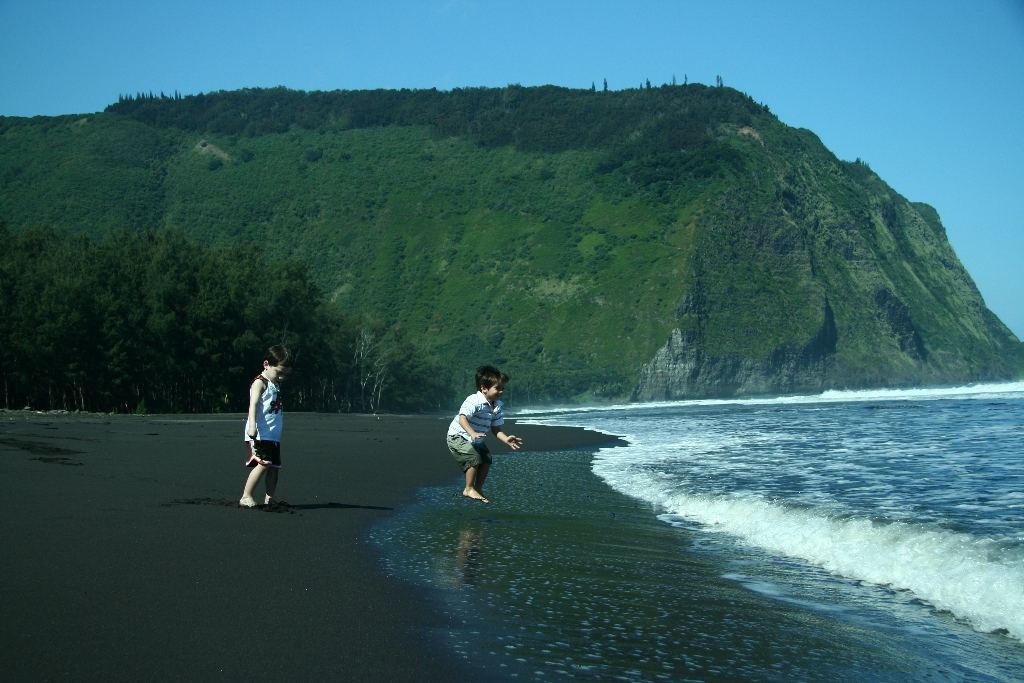
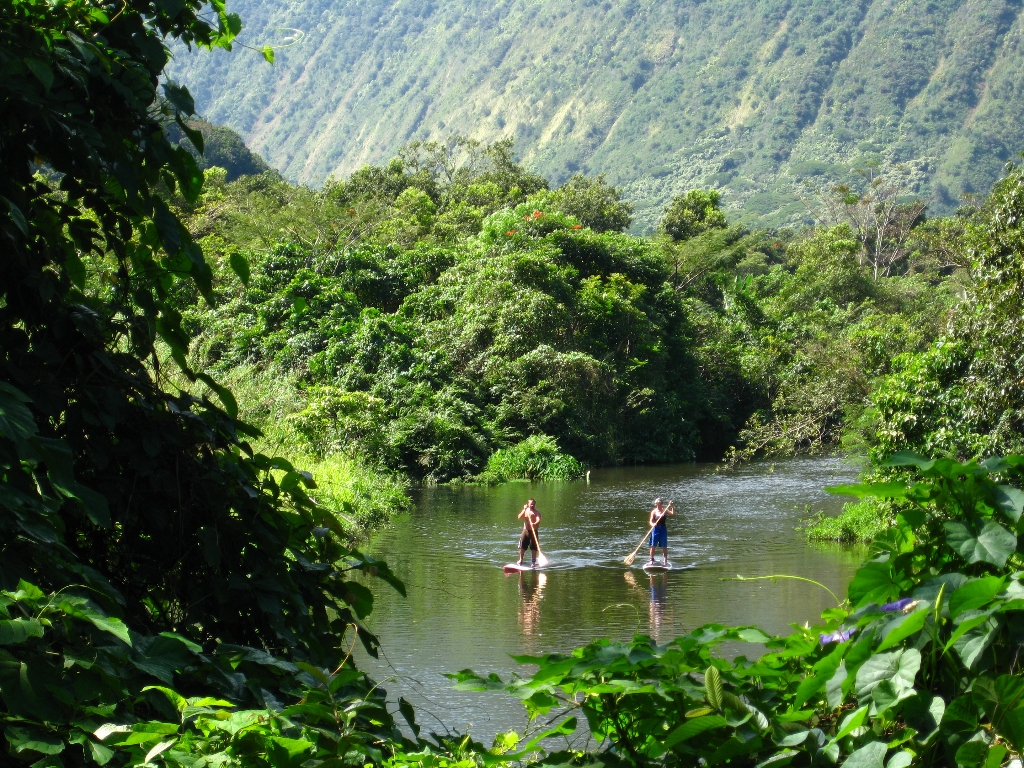




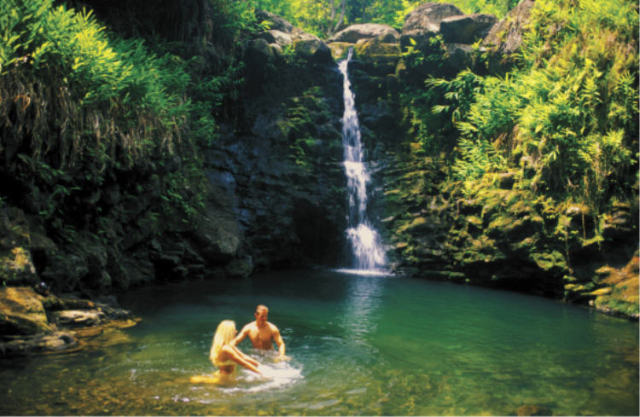 Hike
with an expert guide in Hawai'i Volcanoes National Park, in the rain
forests, deep in remote valleys, and explore hidden waterfalls
Hike
with an expert guide in Hawai'i Volcanoes National Park, in the rain
forests, deep in remote valleys, and explore hidden waterfalls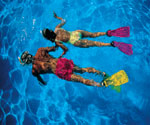
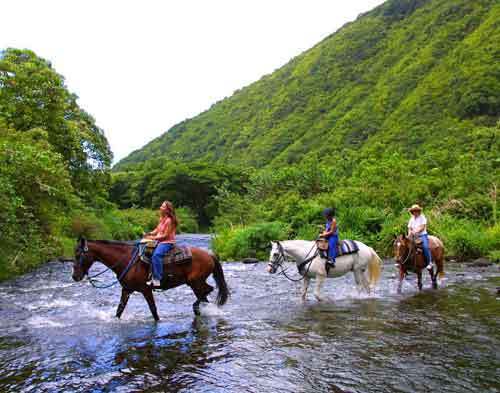 Enjoy
a picturesque Hawaiian horseback ride through the Valley of the
Kings, a lush tropical paradise of jungle trails, waterfalls, and spiritual sites.
Enjoy
a picturesque Hawaiian horseback ride through the Valley of the
Kings, a lush tropical paradise of jungle trails, waterfalls, and spiritual sites.


